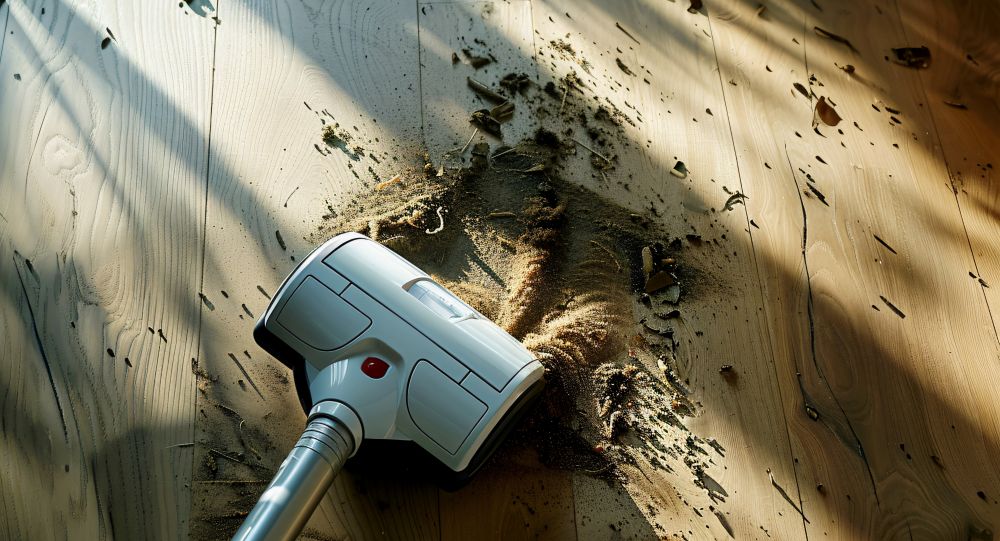How Do You Clean Up After Concrete Work: Tips for a Safe and Efficient Cleanup

Cleaning up after concrete work doesn't have to be complicated or dangerous. This guide covers everything from preparing your workspace to disposing of waste properly. You'll learn the right way to remove excess material, clean your tools, and stay safe throughout the process. Having a trusted cleaning crew or following these proven methods makes the job faster and safer. Read on for practical tips that'll help you finish your concrete project the right way.
Preparing the Cleanup Area
Before you begin cleaning, ensure the area is clear and safe to work in. Get rid of any loose gravel, rocks, or concrete chunks. Sweep everything to remove smaller bits that might get in your way. Look for any sharp metal pieces or objects that could cause harm to someone. Wear the right gear: gloves, goggles, and sturdy boots are a must. Set up your tools and equipment ahead of time so everything's ready when you need it. Taking time to prep the area correctly means fewer problems and a safer cleanup from start to finish.
Removing Excess Concrete
Scrape off extra concrete using a sturdy trowel or concrete scraper. Hold your tool at a low angle and push down firmly to lift the material. Start at one end and work your way across to get everything. If the concrete has already hardened, use a hammer and chisel to break it into smaller pieces first. Be careful not to scratch or damage what's underneath while you're scraping. Take your time and be thorough; getting all the excess off now saves you trouble later. Once you've scraped away as much as possible, you can proceed with dealing with the waste.
Proper Disposal of Waste
Learn how to dispose of your concrete waste correctly by checking your local regulations and environmental requirements. Keep concrete separate from other trash to make recycling easier. Contact your local waste facility to determine if they accept concrete and inquire about their drop-off procedure. For larger jobs, consider renting a roll-off dumpster to keep everything contained and organized. You can also crush larger pieces into smaller chunks to save space. Always choose disposal methods that protect the environment and follow the law. Getting rid of waste the right way is just as important as the cleanup itself.
Cleaning Tools and Equipment
Remove all hardened concrete from your tools to keep them working well and lasting longer. Start by scraping off the bulk with a putty knife or scraper. For stubborn spots, use a wire brush or abrasive pad to scrub the surfaces clean. Soak your tools in warm, soapy water to loosen any leftover concrete. Rinse everything thoroughly and dry with a clean cloth to stop rust from forming. Disassemble equipment, such as mixers or trowels, as much as possible for a deeper clean. Ensure all parts are completely dry before storing them away. This regular care keeps your tools in great shape for your next project.
Safety Measures During Cleanup
Put safety first by taking the right precautions to avoid accidents and injuries. Wear protective gear, such as gloves, safety goggles, and sturdy boots, to shield yourself from sharp objects or chemicals. Ensure your cleanup area has good airflow to prevent fumes and dust from accumulating. Be careful when you're moving heavy equipment or lifting debris; lift with your legs, not your back. Keep the space well-lit and clutter-free to prevent anyone from tripping or falling. Communicate clearly with your team to coordinate everyone's tasks and prevent mishaps. Following these safety steps protects everyone and keeps the cleanup running smoothly.
Final Site Inspection and Maintenance
Perform a thorough final check and address any necessary maintenance to ensure your concrete work remains strong and safe for years to come. Here's what to focus on:
- Inspect Cracks: Look for any cracks that formed while the concrete was curing.
- Evaluate Drainage: Ensure water drains properly to prevent pooling and damage to the concrete.
- Clean Surface: Remove any leftover debris or materials to achieve a neat, finished look.
- Apply Sealant: Consider using a sealant to protect the concrete and improve its resistance to stains.
- Monitor Regularly: Set up regular check-ins to catch and address problems early, keeping your concrete looking good.
Related Topics:



